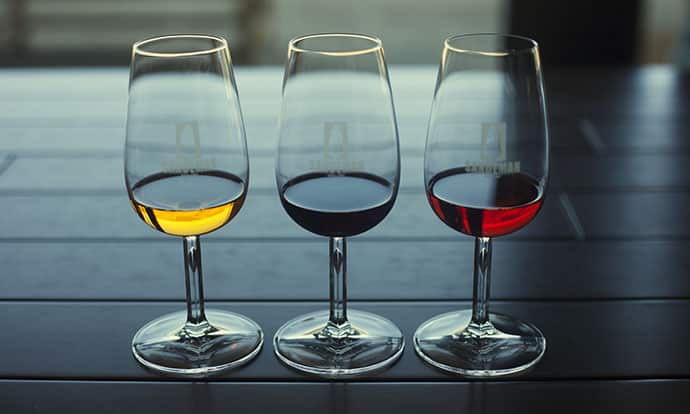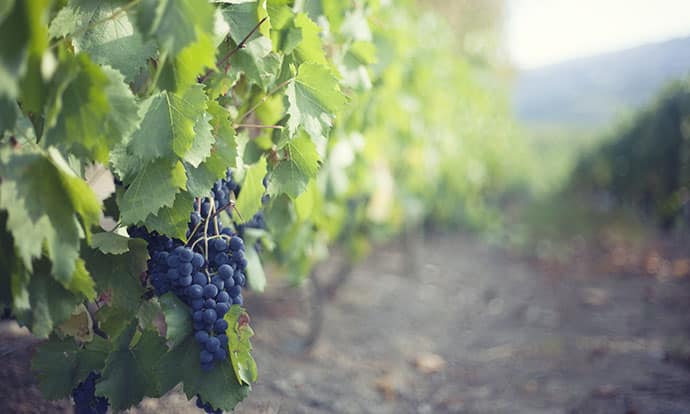Last updated on January 11, 2024

My relationship with alcohol is complicated. I drink it but I couldn’t say I like it. Alcoholism runs in the family. There have been deaths, and it caused me terror in childhood. I once thought I’d steer clear of it for life, but it didn’t work out like that. I became a teenager in England; I joined the herds, I mixed horrendous concoctions, I binged and I was sick.
If you’re not English, perhaps this sounds outrageous, but it’s the norm where I’m from – a rite of passage, which unfortunately often becomes habit. Go out onto a British high street at the weekend and you will undoubtedly see some loutish behavior – drunken wah-heys, stumbling heels and puke-filled gutters. I’d like to say it’s just the teens, but bald heads and wrinkles pepper the brawling crowds.
Drinking to get drunk
It’s a culture of drinking to get drunk. Fruity, lurid mixes mask the cheap, paint-stripper liquor. Price and alcohol content run reign over taste – how else would white cider survive?
Of course, it’s not always like this. England isn’t a universal nation of bingers – but these scenes, combined with my own experiences watching the destructive effects of alcohol, are enough to stop me happily, and simply, saying “I like alcohol”.

A recent trip to the Douro Valley in Portugal reminded me of the other side of this coin: the redeeming features of alcohol and why I can’t say I hate it either. I went there with a group of bloggers as guests of Turismo de Portugal. We toured the vineyards and spent relaxing days surrounded by rolling hills filled with grape vines destined to a life in the bottle. The region is dedicated to the production of wine and port. Some of those bottles may end up regurgitated in a British gutter, but for the most part, I imagine them savoured over mealtimes, a lubricant for friendly conversation. In this land, taste and quality is king.

Shopping organically and being aware of where our food comes from are hopefully concepts that are firmly on our radars. In Douro, you’re surrounded by those origins. There’s no mystery from vine to wine. We went to two quintas that described their process to us. The grapes are picked, crushed (sometimes by feet), fermented in tanks or barrels and then bottled for sale. Care is taken about which grapes make what wine. It’s an art, passed down through generations.
A glass of history in Douro Valley
Jodi Ettenberg of Legal Nomads was one of my fellow bloggers on the trip. In her new book, The Food Traveler’s Handbook, she describes how everything we eat is a plate of history. This observation was brought to life as we toured the quintas and tasted their wine. Not only do I rarely know where my food comes from physically, but I hardly ever know the history of how it came to be. For me, having both these pieces of knowledge makes the experience much richer. It provides a story.

Quinta da Pacheca was handed down by our guide’s grandfather, and was one of the first wineries in the region to bottle wine under its own label. She takes pride in her winemaking and heritage, always trying to preserve her ancestor’s wisdom. It’s a romantic tale, far removed from WKD luridness and drunken excess.
And therewith is one of the beautiful sides of alcohol. Its side effect is merriment, but inebriation is not its sole purpose. This is the type of alcohol I enjoy. It’s an art-form we get to taste.
[callout bg=”#dfdbd8″ color=”#261e19″]
Useful information on Douro Valley
The Douro Valley is about an hour outside of Porto. You can take day tours down the river, or stay for longer in one of the beautiful quintas. Both Quinta da Pacheca and Quinta Nova de Nossa Senhora do Carmo are luxurious yet charming options. We also visited Quinta do Seixo, which doesn’t have accommodation but is certainly worth a visit for the stunning views and awesome wine. This is where I tasted my favourite ruby port. As a treat, I would definitely recommend the DOC restaurant.


I like the idea of a plate of food (or glass of wine) being a little glimpse into history. That’s a cool way to look at it.
I’ve never been a big drinker (I have too many American friends who were binge drinkers in college…), but I can appreciate this sort of drinking, even if I don’t usually partake in it myself.
If you like that description, I definitely recommend reading Jodi’s book. She’s a great writer!
I love your comment that fine wine is an art form we get to taste. I’ll think of that next time I have a glass of wine with friends.
Thank you. I like that idea too. I think it somehow makes it taste even better!
I’m from the U.S. so the teenage binge-drinking scenario is definitely familiar. I do love places like Spain, Portugal, Italy and France where the wine is sipped over dinner, and it becomes as you said, “a lubricant for friendly conversation.” This post makes me want to go to the Douro, I missed it when I went to Portugal!
You should definitely go if you get the chance. It’s gorgeous!
Nice to see your perspective on the Douro trip. I go months without drinking any alcohol but in Europe it’s always great to try the wines. I much prefer their drinking culture to that in England – as you said it’s about taste not getting drunk.
Thanks Erin. It was a pleasure sharing wine with you in Douro 🙂
Great article! That is a truly beautiful area, I left there not too long ago. I also fell in love with Port. They spoil you there.
Hey Victoria, a lovely, thoughtful piece. My memory of the Duoro is sitting on a train for three hours when we unfortunately hit someone on the tracks. I absolutely loved Oporto though, such a quaint town, and the fresh food market – sensational!
Hi Sarah,
I was think to go by train this coming may 2013… Sure I or just take a boat trip… I read via Internet that from pinhao to pochinho was the best part… Can you share some tip to me
Thank
[email protected]
Oh I love how you described my DOuro…
gosh how I miss POrtugal,family, the wine and the food!